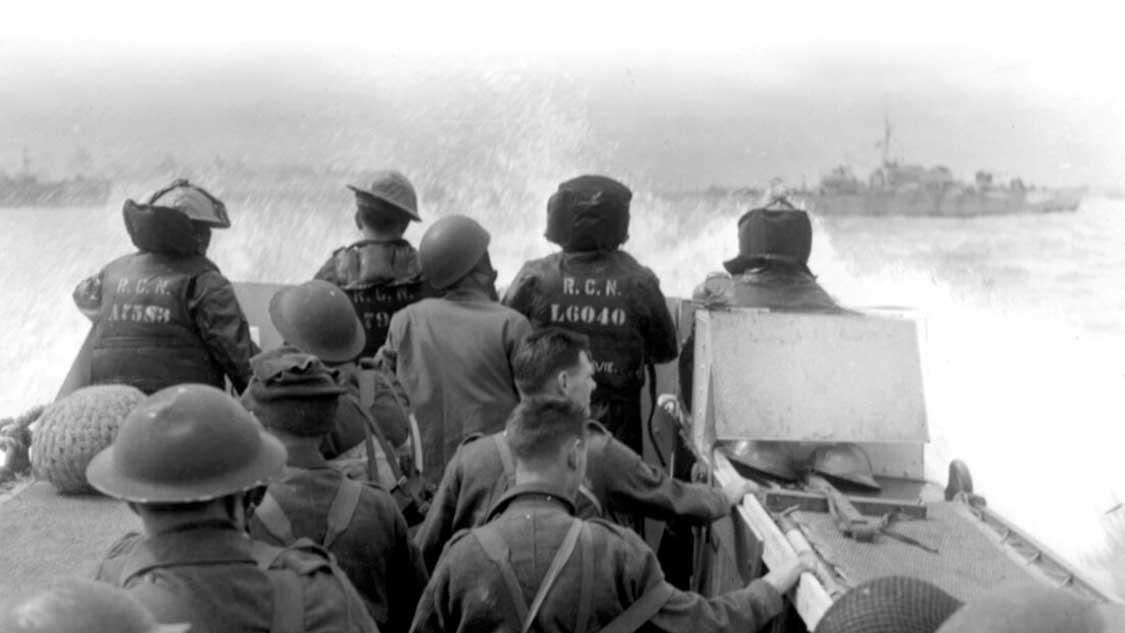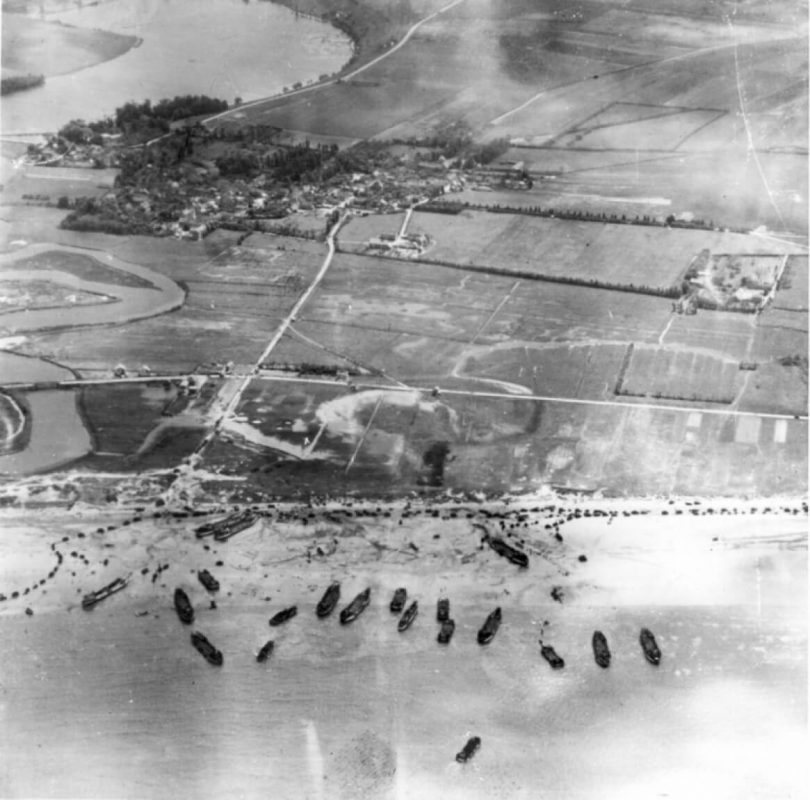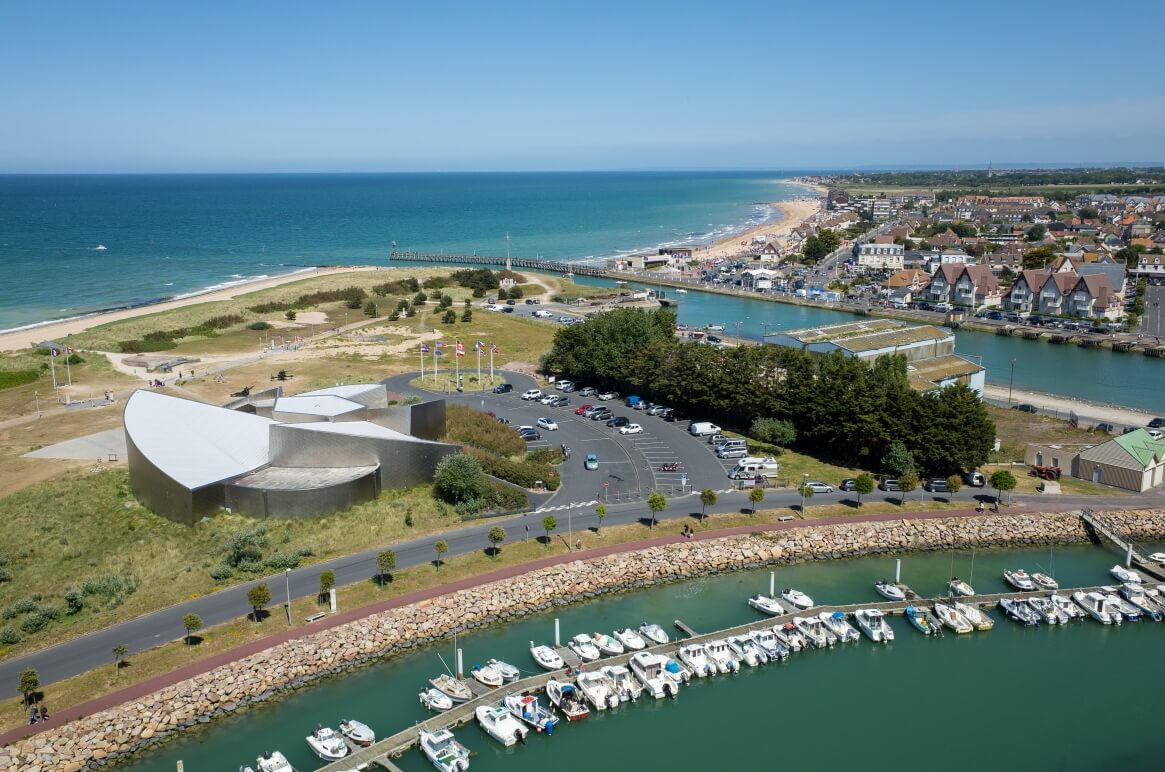
In this day and age, it’s difficult to even imagine the sacrifice that was asked of young men and women across Canada during World War II. And, of course, so many individuals made the ultimate sacrifice overseas and gave their lives to ensure that Canada remained free, and in control of its own destiny.
Though it’s difficult to imagine or fathom, I believe it’s our duty to do so – to put down our phones, turn off our headphones, and reflect.
My grandfather, David Moore, served overseas in WWII in the Air Force, and I’m currently reading all the love letters he wrote to my grandmother during that period. He talks about London having no glass left in the windows, the men who left on planes and never returned, and the longing he felt to be home and to see my grandmother again.
I’m about 150 letters into them now with, give or take 200 left to read. I plan to write a piece of historical fiction based on those letters, but that’s a story for another day. I’m struck by the notion that if he hadn’t made it home, then my mother wouldn’t have been born, and neither would I.
Each one of these people who went overseas had mothers and brothers, sisters and fathers, and perhaps a partner that they were hoping to start a family with when (and if) they returned.
“Over one million Canadians (from a country of only 11 million at the time) served in the armed forces during the Second World War,” said Alex Fitzgerald-Black, historian and author, as well as Manager of Operations for the Juno Beach Centre Association (JBCA).
Just take a second to let that sink in. That’s almost 10% of the population…
In Courseulles-ser-mer in Normandy, the sacrifice of Canadians is certainly not forgotten. In fact, that’s where the Juno Beach Centre stands today, and where a ceremony and wreath-laying took place on June 6th, 2021 on the very beach where Canadian troops fought their way ashore 77 years earlier.
Lest We Forget

These ceremonies, and the Juno Beach Centre itself, are testaments to the idea that we will not forget what was asked of ordinary Canadians during extraordinary times.
This most recent ceremony was the first time that there were no Canadian Second World War veterans in attendance, due to the COVID travel restrictions and protocol, as well as the fact that many WWII veterans are advanced in age.
As Fitzgerald-Black noted, these veterans “returned home, raised families, and built the Canada we have inherited today. Nearly eight decades later, only about 25,000 of these veterans remain, and their average age approaches 100”.
Sadly, my grandfather isn’t of the number that are still alive, as he passed away before I could ever meet him. Yet, in a very strong sense, I’m “meeting” him now through his letters, and, amazingly, I can see myself in him. I look at old pictures of him sometimes, and I’m proud of the likeness. I hope he would appreciate the man I’ve tried to become.
The Honorary Lt.-Col Don Foster, Director at the Juno Beach Centre Association (JBCA) reminded the public of something that we certainly cannot afford to forger:
“The incredible thing about Canadians is that they were all volunteers. It says something about Canada’s values.”
Foster spearheads the JBC’s Legacy of Honour initiative that captures veterans’ recollections of their wartime experiences on video to preserve it for future generations.
“These men and women have stories to tell that are still relevant and important today,” said Foster. “We make sure they have the ability to share them so the lessons we learned from what they endured are not lost to history. It really is a now or never circumstance, which is why the Legacy of Honour initiative is such an important mission we’re pursuing at the Juno Beach Centre.”
More About Juno Beach

Juno Beach is located in Courseulles-sur-Mer, a seaside village along the 8 km stretch of Norman coast where Canadian forces were assigned to come ashore during D-Day. For people living in France during the war, the 1944 landings signified the end of almost four years of Nazi occupation. The war would continue to rage on for almost a year more, but as many will know, it’s D-Day that’s widely credited with turning the tide of the war.
I first learned about that in depth when reading Stephen E. Ambrose’s remarkable novel, D-Day: June 6th, 1944: The Climactic Battle of WWII, and I would strongly recommend it.
My grandfather wasn’t a part of D-Day, but he speaks candidly in his letters about his friends from back home who were involved with the landing. He spoke of his one good friend in particular who lived through it, but was never quite the same after. At that time, they didn’t quite have the language to speak in-depth about mental health, but I believe my grandfather simply noted that he was “shell shocked,” and hoped a good break and fresh air might bring back the man he used to know.
Important Facts About Canadians on D-Day
The Juno Beach Centre provided us with some key facts about the Canadian mission on D-Day that we’d like to share with you verbatim, in order to help our readers understand just what was asked of these Canadian soldiers.
“The beaches: On June 6, 1944, the Allied assault force landed on a 75 km stretch of heavily- defended beach on the northern coast of France, in the Normandy region. From west to east, the beaches were codenamed Utah (American), Omaha (American), Gold (British), Juno (Canadian), and Sword (British).
D-Day participants by nationality: The Allies landed 156,000 troops on D-Day. By sea, the Americans landed 23,250 at Utah and 34,250 at Omaha, the British landed 24,970 at Gold and 28,845 at Sword, and the Canadians and British landed 14,000 and 7,000 respectively at Juno Beach. Approximately 23,400 paratroopers landed by air on the extreme west and eastern flanks of the assault area.
Canadian objectives on D-Day: The Canadian objective on June 6th was to storm Juno Beach and reach a railway line linking Caen in the east to Bayeux in the west. They would dig in here, link with British troops on their left and right, and create a fortress defence against expected German counter-attacks.
What the Canadians accomplished: While the Canadians did not capture all their objectives on D-Day, they did advance the furthest. Over the following three days, the Canadians fought a series of bloody battles holding off repeated German counter-attacks that threatened the entire Allied front line in France.
What happened next: After 76 days of intense combat in Normandy, the remnants of two defeated German armies retreated across France. The Canadian Army joined in the pursuit and fought through Belgium and the Netherlands before striking into Germany, which surrendered on May 8, 1945.”
The Juno Beach Centre

For those looking to visit the museum, it recently re-opened after a lengthy closure due to COVID-19 restrictions. Anyone who plans to visit the Juno Beach Centre in the coming weeks or months can find updated information and health and safety guidelines at www.junobeach.org.
I’ve yet to have the honour to visit, but it’s certainly on my bucket-list, and it’s something I’d like to do once I’m through my grandfather’s letters.
The museum was founded in 2003 by veterans and volunteers with the mandate to “preserve the legacy of all Canadians who served during the Second World War.” Since they opened their doors, they’ve had over one million visitors, and it’s been designated a site of national historical significance to Canada, and rightfully so.
We need places like the Juno Beach Centre to remind us that so much of what we now appreciate in the present in this country is due to the fact that countless individuals left our shores, and sacrificed their future.
Christopher Mitchell is the Cofounder of Ultimate Ontario. He’s visited over 80 countries, and has lived on 4 continents, but now has his eyes set squarely on exploring this incredible province, and helping others do the same.

Geoff McDowell
Thursday 11th of November 2021
My wife and I visited Normandy and the Juno Beach Centre this past August. Aside from the very good museum, there is a tour of the underground fortifications in the area the Germans set up across France and up as far as Scandinavia. It is very worthwhile visiting several other museums in the general area including Caen and Bayeaux as well as the American and British museums along the coast. We spent a week there and it was an amazing experience. I now need to get to Vimy where my grandfather fought.
Christopher Mitchell
Thursday 11th of November 2021
Thank you so much for sharing that, Geoff!